Mechanism of the post-fire debris flow of the Xiangshui gully in “3·30” fire area of Xichang,Sichuan Province
-
摘要: 2020年3月30日,西昌市经久乡发生森林大火,响水沟流域植被被林火大面积烧毁,同年雨季,响水沟流域内多条沟道暴发泥石流,其中1#、2#、3#沟毗邻居民房屋和耕地,影响较为严重。通过野外调查、遥感解译和室外试验,以响水沟1#、2#、3#沟为研究对象,分析了不同林火烈度下,渗透特征、坡面侵蚀和沟道侵蚀的差异,从而揭示响水沟火后泥石流的成灾机理。结果表明,林火是泥石流暴发的重要诱因,火后泥石流的降雨阈值会明显降低。林火干扰导致坡面土壤的渗透系数表现出不同程度的降低,林火烈度越严重的区域,渗透系数越小,降雨更大比例地转化为坡面径流参与到坡面侵蚀。随降雨次数的增多,轻度、中度、重度火烧区域的坡面土壤侵蚀深度均增加;中度、重度林火烈度的侵蚀深度差异不大,且明显高于轻度区域,说明当林火烈度达到中度时,坡面土壤便会受到较大程度的侵蚀。地形条件相似的沟道,林火烈度越严重,泥石流侵蚀能力越强,最终体现于沟道两岸崩滑体数量越多,沟道宽度和深度越大。Abstract: On March 30, 2020, a forest fire broke out in Jingjiu Township, Xichang City, and the vegetation in Xiangshui gully watershed was burned in a large area by forest fire. In the rainy season of the same year, debris flow broke out in many gullies in the Xiangshui gully watershed, of which 1#, 2#, 3# gullies were adjacent to residential houses and cultivated land, and the impact of the debris flow was relatively serious. Through field investigation, remote sensing interpretation, and outdoor test, taking Xiangshui gully 1#, 2#, 3# gully as the research object, the differences of permeability characteristics, slope erosion, and gully erosion under different forest fire intensities are analyzed, so as to reveal the disaster mechanism of post-fire debris flow of Xiangshui gully. The results show that forest fire is an important inducement for the outbreak of debris flow, and the rainfall threshold of debris flow after the fire will be significantly reduced. Forest fire disturbance leads to the decrease of the permeability coefficient of slope soil in varying degrees. The more serious the forest fire intensity is, the smaller the permeability coefficient is, and the rainfall is transformed into slope runoff in a larger proportion to participate in slope erosion. With the increase of rainfall times, the depth of slope soil erosion in light, moderate and severe fire areas increased. The difference of erosion depth between moderate and severe forest fire intensity is small, and it is significantly higher than that in light areas, indicating that when the forest fire intensity reaches moderate, the slope soil will be eroded to a greater extent. For the gully with similar topographic conditions, the more serious the forest fire intensity is, the stronger the erosion capacity of debris flow is, which is finally reflected in the greater the number of landslide bodies on both sides of the gully and the greater the width and depth of the gully.
-
0. 引言
火后泥石流是指发生在火烧迹地与林火行为有关的泥石流。1987年,Wells等[1]在对美国佛罗里达州的泥石流调查时发现,当地泥石流的发生与附近的林火之间具有紧密联系。随后,越来越多的国内外学者开展了对火后泥石流多个方向的研究。Staley等[2]研究了火后泥石流与降雨时间间隔之间的关系,研究表明,在美国西南部观察到的大部分(77%)火后泥石流与降雨强度有关,其重现间隔小于两年。Rengers等[3]通过使用机载激光雷达,获得了激光雷达数据集,以研究不同尺度下火烧迹地的侵蚀和沉积物的演变,结果表明,在流域尺度上,大部分侵蚀来自山坡,并且山坡侵蚀是干裂、间沟侵蚀和细沟侵蚀的混合体。Staley等[4]认为雨滴冲击引起的侵蚀、剥落、表面冲刷和细沟侵蚀是导致小而陡的流域上游火后泥石流形成的主要侵蚀过程。Santi等[5]认为许多火后泥石流是由径流和侵蚀引发的,并通过运动中泥石流的侵蚀和冲刷而扩大规模。
就火后泥石流的启动机理而言,学者们就此也展开了较为广泛的研究。Woods等[6]对美国蒙大拿州的6个试验点进行研究发现,覆盖在粗糙或大孔土壤上的灰烬层(<1 cm)会堵塞较大的孔隙,增加相对于火灾前同样条件的水文响应,而覆盖在细粒或非大孔隙土壤上的相同灰烬层则没有影响。Larsen等[7]对美国科罗拉多高原和落基山脉交界处的尤因塔山脉东部最近发生火后泥石流的研究发现,山脉东部的基岩和地形特征是泥石流形成的主要控制因素,而火灾是次要因素。Oakley等[8]对美国加州南部1980—2014年之间发生的93次火后泥石流灾害进行研究发现,在地形陡峭、岩石和土壤高度易蚀、林火干扰以及较大的降雨强度情况下,即使在降雨总量相对较小,也能引发火后泥石流。Wall等[9]对美国俄勒冈州2018年发生的火后泥石流的研究发现,严重的火烧程度导致了泥石流的启动,集水条件和陡峭的地形则可以促进泥石流的发展。由此可见,火后泥石流的空间发育受到诸如林火干扰、地形地质、灰烬层和降雨等多个因素的影响。
2020年3月30日,四川省西昌市经久乡附近发生森林大火,大火持续3天,位于火烧迹地内的响水沟森林植被遭到不同程度的林火焚烧。同年5—7月,响水沟流域内的多条沟道先后暴发规模不等的泥石流,其中,1#、2#、3#沟暴发的泥石流摧毁当地居民房屋、耕地和道路,严重威胁当地居民的生命财产安全。文中以响水沟流域内的1#、2#、3#沟所暴发的火后泥石流为研究对象,在野外调查、室外试验基础上,借助Sentinel-2遥感影像,分析不同林火烈度下,火烧迹地部位渗透特征、坡面侵蚀及沟道侵蚀的差异,以揭示响水沟火后泥石流的成灾机理。
1. 研究区地质环境条件概况
研究区在西昌市安哈镇响水沟,位于川西高原,海拔1568~2274 m,地势东高西低。地处康滇地轴中段,地形崎岖,以山地为主,侵蚀剥蚀中山地貌。
研究区属典型亚热带高原季风气候,冬无严寒,夏无酷暑,年均气温约17 °C。每年5—10月为雨季,多降大雨、暴雨、夜雨,雨季降雨量占全年总降雨量的90%左右,多年平均降雨量1013.5 mm/a[10]。
研究区附近的地质构造主要为安宁河断陷褶皱带。沿安宁河河谷有两条很陡的深大隐伏断裂,地质构造复杂,断裂、褶皱构造发育[11],历史上多发地震,是历史地震中心,地震基本烈度为Ⅸ度。
研究区地层主要为第四系泥石流堆积层(
${\rm{Q}}_4^{{sef}}$ )、残坡积层(${\rm{Q}}_4^{{el+dl}}$ )以及白垩系的泥岩、泥页岩、粉砂岩(图1)。地区年均风速为1.6 m/s,8级以上大风年平均出现10日左右,且主要集中在2—5月[12]。受垂直高度及气温风速变化的影响,研究区地表风蚀作用强烈,岩石风化严重。2. 火后泥石流发育特征
研究区1#、2#、3#沟道地理位置相近,地形地貌、地层岩性相似,其汇水面积较小,但沟道较多,较陡,具备泥石流暴发的基本地形条件(图1、表1)。西昌“3·30”森林大火导致研究区内大量植被被焚毁,林火干扰导致坡面土壤物理力学性质发生改变、表层土壤的雨水渗透能力下降、坡面侵蚀加剧,在短时间强降雨下十分容易暴发泥石流。实地调查期间,1#、2#、3#沟就发生过多次(表2)泥石流,其中3#沟在火灾后的当年5月1日率先暴发泥石流,随后1#、2#沟也相继暴发了泥石流。泥石流冲毁居民房屋、耕地和道路,对当地居民的生活造成了较大影响(图2)。
表 1 研究区各沟道地形特征参数Table 1. Topographic characteristic parameters of each channel in the study area沟名 汇水
面积
/km2主沟
长度
/m流域相对
高差/m流域切
割密度
/(km·km−2)沟道纵坡降/‰ 1# 0.28 1059 402 10.50 305 2# 0.96 1 902 632 9.74 308 3# 0.25 969 305 10.51 323 表 2 研究区泥石流暴发情况统计表Table 2. Statistics of debris flow outbreaks in the study area沟
名是否发生泥石流 5月1日 6月17日 6月23日 7月18日 1# × × √ √ 2# × √ √ √ 3# √ √ √ √ 注:“√”代表暴发泥石流;“×”代表未暴发泥石流。 3. 火后泥石流成灾机理分析
3.1 林火烈度
火烧(2020年3月30日)前研究区植被覆盖率在70%以上,火烧后植被覆盖率显著下降。基于火烧前后近红外波段和短波红外波段反射率的差异[13],林火烈度可用归一化燃烧指数(Normalized Burn Ratio,NBR)和归一化差分燃烧指数(differenced Normalized Burn Ratio,dNBR)表征。
文中通过Earthexplorer(http://earthexplorer.usgs.gov)网站获取了研究区域火烧前后(2020年3月25日和2020年4月5日)的Sentinel-2遥感影像。通过使用独立版本的Sen2Cor处理器对遥感影像进行大气校正后,利用式(1)和(2)分别求得归一化燃烧指数NBR和归一化差分燃烧指数dNBR。结合林火发生后的现场调查确定研究区的综合燃烧指数(composite burn index,CBI)[14],将研究区林火烈度分为重度火烧、中度火烧、轻度火烧和未火烧4个等级,并将野外调查结果和遥感解译校正后的结果相结合得到研究区林火烈度分布图(图3)。
$$ NBR=\frac{NIR-SWIR}{NIR+SWIR} $$ (1) $$ dNBR={NBR}_{火烧前}-{NBR}_{火烧后} $$ (2) 式中:NIR——近红外波段;
SWIR——短波红外波段。
Wall等[9]认为中度及重度火烈度的面积占比是引发泥石流的最有影响的因素之一。胡卸文等[10]认为相较于轻度林火烈度,中度及重度林火烈度对于泥石流暴发起着主要作用。事实上,研究区未火烧和轻度火烧的区域主要位于沟道下游和沟谷一带,其对泥石流的暴发影响较小,而各沟道上游则分布着林火干扰较为严重的火烧迹地(图3),植被焚毁、坡面浅表层岩土体物理力学性质改变都会对泥石流的暴发产生积极作用。文中通过ArcGIS 的Spatial Analyst工具对林火烈度分布图进行掩膜提取,统计各沟道的属性表数据得到各沟道的林火烈度等级的占比数据(表3),以分析中度、重度等级的林火烈度占比对泥石流暴发的影响。
表 3 研究区各沟道林火烈度分布情况Table 3. Distribution of forest fire intensity in each gully in the study area沟名 未火烧/% 轻度
火烧/%中度
火烧/%重度
火烧/%1# 68.24 8.10 20.35 3.31 2# 10.78 9.90 37.25 42.07 3# 25.25 32.86 32.73 9.16 对暴发过泥石流的1#、2#、3#沟进行数据统计分析(表4),发现1#、2#、3#沟2020年5月—7月期间,暴发的泥石流规模和中度、重度林火烈度占比是正相关的。
表 4 中度、重度火烧区与泥石流规模和次数的关系Table 4. Relationship between forest fire intensity and debris flow scale and times沟名 中度、重度林火烈度
占比/%泥石流累计规模
/(104 m3)泥石流
暴发次数1# 23.66 0.24 2 2# 79.32 2.24 3 3# 41.89 1.09 4 实地调查表明,响水沟流域受林火干扰的沟道达到10条以上,但并非所有沟道都暴发了泥石流。而研究区1#沟左侧存在未被林火干扰的相邻沟道,尽管其地形条件与1#沟相似,但却未暴发泥石流。
综上可知,泥石流的启动不仅仅由是否受到林火干扰决定,但林火会诱发泥石流,且林火烈度的严重程度对于泥石流的暴发规模和暴发频率呈现积极作用。
3.2 渗透特征
根据Cannon等[15]的研究可知,火后泥石流主要由坡面径流冲刷和降雨入渗引起的滑坡进而导致,但主要以地表径流冲刷为主。Parise等[16]统计指出,只有12%火后泥石流是由浅层滑坡所触发。为此,研究表层土壤的渗透特征对于研究火后泥石流的启动机理具有重要意义。
野外渗透性能的测定主要有单环刀法、双环刀法、圆盘入渗仪法和Philip-Dunne入渗仪法等[17]。杨瀛等[18]通过采用美国Decagon公司研发的微型圆盘入渗仪(Mini Disk Infiltrometer)对雅江县八角楼乡火烧迹地土壤进行了渗透性能试验,发现林火会引起土壤斥水性增强,从而导致土壤的渗透性大幅下降。
基于微型圆盘入渗仪具有操作简单、携带便携、适用于野外测定土壤渗透性能的特点,试验采用微型圆盘入渗仪对火烧迹地不同林火烈度等级的区域随机取点进行渗透试验(每个林火烈度等级随机取点5个,每个点在土壤表层0~2 cm和2~4 cm分别做20组试验)。试验时,选择较为平整的坡面,刮尽表面的浮土和灰烬,将试验仪器与土体表面紧密接触,并按照一定间隔读数,见图4(a)。
试验结果(图5)表明,在土壤表层深度0~2 cm,轻度、中度和重度火烧区土壤渗透系数依次为4.12×10−5 cm/s、2.95×10−5 cm/s和1.46×10−5 cm/s,相较于未火烧区依次下降了24.82%、46.17%和73.36%;在土壤表层下2~4 cm,轻度、中度和重度火烧区土壤渗透系数依次为3.91×10−5 cm/s、1.79×10−5 cm/s和1.07×10−5 cm/s,相较于未火烧区依次下降了20.04%、63.39%和78.12%。
由图5中结果可知,各林火烈度等级下,表层0~2 cm的土壤渗透系数稍大于2~4 cm的土壤渗透系数,且随着林火烈度的提高,土壤的渗透系数下降程度越高,这主要是由于林火会引起土壤斥水性增强,从而导致表层土壤的渗透性能大幅下降,这与杨瀛等[18]的研究结果是一致的。渗透系数的降低,表明雨水入渗减少,坡面径流增加。
3.3 坡面侵蚀
Santi等[5]认为火后泥石流物源成分通常是分布在流域各处地表水径流夹带的物质,山坡上大面积的坡面侵蚀逐渐过渡到更深的溪流,渐进式过渡到沟道侵蚀。为分析不同林火烈度下坡面侵蚀的变化情况,在研究区不同林火烈度(轻度、中度和重度)的火烧迹地内,选择坡度相似、距分水岭距离相近的样地布设若干侵蚀针(轻度、中度和重度林火烈度等级均随机布设5排侵蚀针,每排50个侵蚀针),每次降雨后,实地测量坡面土壤的侵蚀深度,见图4(b)。在布设侵蚀针时采用手压或铁锤敲击方式,将铁钉坡面垂直方向潜入土中,以铁钉顶部与坡面平行为准。在布设时尽可能不干扰试验区的土壤表层情况。
试验结果(图6)表明,轻度、中度、重度林火烈度的火烧迹地土壤在雨后均会产生侵蚀,随着降雨次数的增加,侵蚀深度均表现出增加。相较于轻度林火烈度的火烧迹地,中度及重度林火烈度处的火烧迹地的土壤侵蚀要更加剧烈。重度火烧迹地内的土壤,坡面侵蚀深度要略大于中度火烧迹地内的土壤,但二者的侵蚀深度相近,甚至中度火烧迹地内的土壤侵蚀深度会偶尔大于重度火烧迹地内的土壤,这表明当林火烈度达到中度时,降雨时坡面土壤便会受到较大程度的侵蚀。
3.4 沟道侵蚀
实地调查表明,研究区上游主要表现为坡面侵蚀,当坡面侵蚀到一定程度时会逐渐演变为沟道侵蚀,见图7(a),这与王严等[19]的研究结果是一致的。泥石流沿沟道运动会加剧沟道侧蚀和下蚀。侧蚀使得沟道变宽,同时侧蚀还会引发沟道岸坡崩滑体发育;下蚀使得沟道变深(表5)。研究区1#、2#、3#沟道宽度和深度均有所不同,见图7(b)(c)(d);各沟道两岸均发育有不同数量的崩滑体,且主要分布于沟道流通区两岸岸坡(图1)。
表 5 中度、重度林火烈度占比与泥石流沟侵蚀的关系Table 5. Relationship between the proportion of moderate and severe forest fire intensity and debris flow gully erosion沟名 中度、重度林火
烈度占比/%崩滑物源
数量/个沟道宽度
/m沟道深度
/m1# 23.66 4 1.0~2.5 0.5~1.5 2# 79.32 22 3.0~6.0 2.0~5.0 3# 41.89 7 3.0~6.0 2.0~4.0 由表1可知,1#、3#沟地形特征参数相似,但3#沟沟道深度、宽度和崩滑物源数量均要大于1#沟,这是由于当沟道林火烈度越严重时,降雨在坡面入渗会越难,越多的雨水转化为坡面径流,从而加剧坡面侵蚀,泥石流就会裹挟更多的物质,使得泥石流侵蚀能力得以提高。对比2#、3#沟,2#沟的中、重度林火烈度占比不仅高于3#沟,而且2#沟的具有较大的流域面积、流域相对高差和主沟长度(表1)。较大的流域面积可以为泥石流汇集丰富水源,提供更多供坡面侵蚀的表层土壤(图1);较长的主沟长度可以让泥石流沿沟道裹挟更多的物质;较大的流域相对高差则为泥石流的运动提供动力条件,加之该沟道的流域形如“漏斗”,有利于汇水。综上可知,2#沟发育着有利的地形条件和侵蚀能力较强的泥石流,即使2#沟的泥石流暴发次数少于3#沟,最终也能体现于2#沟沟道两岸的崩滑数量要远多于3#沟,沟道宽度和深度也要略大于3#沟。
3.5 降雨阈值
2020年雨季,响水沟1#、2#、3#沟暴发了多次规模不等的泥石流。研究区附近有多处降雨监测站,通过对距离研究区最近的降雨监测站降雨资料的整理分析,得到各次泥石流暴发时的降雨情况(图8)。
5月1日泥石流的前期降雨量(从统计起至泥石流暴发前的雨量)为3.6 mm,累计降雨量为12 mm,其激发雨强为5.4 mm/h;6月17日泥石流的前期降雨量为12.3 mm,累计降雨量为26.3 mm,其激发雨强为9.8 mm/h;6月23日泥石流的前期降雨量为0.9 mm,累计降雨量为41.6 mm,其激发雨强为25.1 mm/h;7月18日泥石流的前期降雨量为21 mm,累计降雨量为43.8 mm,其激发雨强为10.7 mm/h。
经查询《四川省暴雨参数统计图集》(2010版)可知,研究区域10 min、60 min、6 h、24 h年最大暴雨量平均值分别为14.0 mm、35.0 mm、55.0 mm、70.0 mm,变差系数分别为0.35、0.40、0.45、0.45。通过计算得到研究区域不同频率降雨强度(表6)。通过对比,4次激发泥石流的降雨强度远小于该区域5年一遇的降雨强度。2020年6月12日,与西昌毗邻的冕宁县彝海镇盐井村暴发泥石流,其小时降雨量达36.6 mm[20]。由此可见,火后泥石流的降雨阈值明显低于常规泥石流。实地调查也表明,研究区1#沟左侧存在未被林火干扰的相邻沟道,尽管其地形条件与1#沟相似,但却未暴发泥石流,这也证明火后泥石流的降雨阈值是明显降低的。
表 6 研究区域不同降雨频率降雨强度值Table 6. Rainfall intensity values of different rainfall frequencies in the study area降雨时段 设计频率/% 20 10 5 2 1 10 min 17.57 20.57 23.38 26.92 29.51 1 h 44.87 53.71 62.14 72.88 80.80 6 h 71.81 87.92 103.50 123.57 138.50 24 h 91.39 111.90 131.72 157.28 176.27 4. 结论
(1)受林火干扰后,并非所有沟都会暴发泥石流,林火是泥石流暴发的导火索,地形条件相似且毗邻的沟,若未受林火干扰,则同等雨量条件下不会暴发泥石流,这是因为火后泥石流的降雨阈值明显低于常规泥石流。
(2)林火会导致坡面土壤的渗透系数变小,各林火烈度等级下,表层0~2 cm的土壤渗透系数稍大于2~4 cm的土壤渗透系数;且随着林火烈度的提高,土壤的渗透系数下降程度越高。渗透系数的降低,表明雨水入渗的减少,坡面径流增加,从而诱发泥石流。
(3)不同林火烈度的坡面均会受到不同程度的侵蚀,随降雨次数的增多,坡面侵蚀程度也会加深。中度、重度林火烈度的坡面土壤,其侵蚀深度明显高于轻度坡面土壤,中度、重度林火烈度的坡面土壤,其侵蚀程度相差不大,说明当林火烈度达到中度时,便会有较大程度的坡面侵蚀。
(4)响水沟1#、2#、3#沟上游山坡上大面积的坡面侵蚀逐渐过渡到细沟。随后,细沟逐渐变成深而窄的沟壑,切入汇流区,过渡到被侵蚀成基岩的沟道。林火烈度越严重,泥石流侵蚀能力越强,沟道下蚀和侧蚀越明显。沟道侵蚀一方面加大了沟道宽度和深度,另一方面,又会提供更多的崩滑物源和沟道物源,进一步加剧泥石流的危险性。
-
表 1 研究区各沟道地形特征参数
Table 1 Topographic characteristic parameters of each channel in the study area
沟名 汇水
面积
/km2主沟
长度
/m流域相对
高差/m流域切
割密度
/(km·km−2)沟道纵坡降/‰ 1# 0.28 1059 402 10.50 305 2# 0.96 1 902 632 9.74 308 3# 0.25 969 305 10.51 323 表 2 研究区泥石流暴发情况统计表
Table 2 Statistics of debris flow outbreaks in the study area
沟
名是否发生泥石流 5月1日 6月17日 6月23日 7月18日 1# × × √ √ 2# × √ √ √ 3# √ √ √ √ 注:“√”代表暴发泥石流;“×”代表未暴发泥石流。 表 3 研究区各沟道林火烈度分布情况
Table 3 Distribution of forest fire intensity in each gully in the study area
沟名 未火烧/% 轻度
火烧/%中度
火烧/%重度
火烧/%1# 68.24 8.10 20.35 3.31 2# 10.78 9.90 37.25 42.07 3# 25.25 32.86 32.73 9.16 表 4 中度、重度火烧区与泥石流规模和次数的关系
Table 4 Relationship between forest fire intensity and debris flow scale and times
沟名 中度、重度林火烈度
占比/%泥石流累计规模
/(104 m3)泥石流
暴发次数1# 23.66 0.24 2 2# 79.32 2.24 3 3# 41.89 1.09 4 表 5 中度、重度林火烈度占比与泥石流沟侵蚀的关系
Table 5 Relationship between the proportion of moderate and severe forest fire intensity and debris flow gully erosion
沟名 中度、重度林火
烈度占比/%崩滑物源
数量/个沟道宽度
/m沟道深度
/m1# 23.66 4 1.0~2.5 0.5~1.5 2# 79.32 22 3.0~6.0 2.0~5.0 3# 41.89 7 3.0~6.0 2.0~4.0 表 6 研究区域不同降雨频率降雨强度值
Table 6 Rainfall intensity values of different rainfall frequencies in the study area
降雨时段 设计频率/% 20 10 5 2 1 10 min 17.57 20.57 23.38 26.92 29.51 1 h 44.87 53.71 62.14 72.88 80.80 6 h 71.81 87.92 103.50 123.57 138.50 24 h 91.39 111.90 131.72 157.28 176.27 -
[1] WELLS W G. The effects of fire on the generation of debris flows in southern California[J]. Reviews in Engineering Geology,1987,7:105 − 114.
[2] STALEY D M, KEAN J W, RENGERS F K. The recurrence interval of post-fire debris-flow generating rainfall in the southwestern United States[J]. Geomorphology,2020,370:1 − 10.
[3] RENGERS F K. Movement of sediment through a burned landscape sediment volume observations and model comparisons in the San Gabriel mountains, California, USA[J]. Journal of Geophysical Research-Earth Surface,2021,126(7):1 − 25.
[4] STALEY D M, WASKLEWICZ T A, KEAN J W. Characterizing the primary material sources and dominant erosional processes for post-fire debris-flow initiation in a headwater basin usingmulti-temporal terrestrial laser scanning data[J]. Geomorphology,2014,214:324 − 338. DOI: 10.1016/j.geomorph.2014.02.015
[5] SANTI P M, VICTOR G, DEWOLFE V G, et al. Sources of debris flow material in burned areas[J]. Geomorphology,2008,96:310 − 321. DOI: 10.1016/j.geomorph.2007.02.022
[6] WOODS S W, BALFOUR V N. The effects of soil texture and ash thickness on the post-fire hydrological response from ash-covered soils, Journal of Hydrology, 2010, 393(3): 274 − 286.
[7] LARSEN I J, PEDERSON J L, SCHMIDT J C. Geologic versus wildfire controls on hillslope processes and debris flow initiation in the Green River canyons of Dinosaur National Monument, Geomorphology, 2006, 81(1−2): 114 − 127.
[8] OAKLEY N S, LANCASTER J T, KAPLAN M L, et al. Synoptic conditions associated with cool season post-fire debris flows in the Transverse Ranges of southern California[J]. Natural Hazards,2017,88:327 − 354.
[9] WALL S A, ROERING J J, RENGERS F K. Runoff-initiated post-fire debris flow Western Cascades, Oregon[J]. Landslides,2020,17(7):1649 − 1661.
[10] 胡卸文, 金涛, 殷万清, 等. 西昌市经久乡森林火灾火烧区特点及火后泥石流易发性评价[J]. 工程地质学报,2020,28(4):762 − 771. [HU Xiewen, JIN Tao, YIN Wanqing, et al. The characteristics of forest fire burned area and susceptibility assessment of post-fire debris flow in Jingjiu Township, Xichang City[J]. Journal of Engineering Geology,2020,28(4):762 − 771. (in Chinese with English abstract) HU Xiewen, JIN Tao, YIN Wanqing, et al. The characteristics of forest fire burned area and susceptibility assessment of post-fire debris flow in Jingjiu Township, Xichang City[J]. Journal of Engineering Geology, 2020, 28(4): 762-771. (in Chinese with English abstract)
[11] 曹楠, 申太丽, 罗水莲, 等. 西昌市地质灾害发育分布规律及防灾建议[J]. 中国地质灾害与防治学报,2010,21(1):127 − 131. [CAO Nan, SHEN Taili, LUO Shuilian, et al. Development and distribution patterns of geologic hazards in Xichang City and prevention suggestion[J]. The Chinese Journal of Geological Hazard and Control,2010,21(1):127 − 131. (in Chinese with English abstract) CAO Nan, SHEN Taili, LUO Shuilian, et al. Development and distribution patterns of geologic hazards in Xichang City and prevention suggestion[J], The Chinese Journal of Geological Hazard and Control, 2010, 21(1): 127-131. (in Chinese with English abstract)
[12] 李秀珍, 刘希林, 苏鹏程. 四川凉山州安宁河流域泥石流危险性评价[J]. 防灾减灾工程学报,2005,25(4):426 − 430. [LI Xiuzhen, LIU Xilin, SU Pengcheng. Assessment on regional debris flow hazardousness of Anning River Valley in Liangshan Prefecture, Sichuan[J]. Journal of Disaster Prevention and Mitigation Engineering,2005,25(4):426 − 430. (in Chinese with English abstract) LI Xiuzhen, LIU Xilin, SU Pengcheng. Assessment on regional debris flow hazardousness of Anning River Valley in Liangshan Prefecture, Sichuan[J]. Journal of Disaster Prevention and Mitigation Engineering, 2005, 25(4): 426-430. (in Chinese with English abstract)
[13] 任云, 胡卸文, 王严, 等. 四川省九龙县色脚沟火后泥石流成灾机理[J]. 水文地质工程地质,2018,45(6):150 − 156. [REN Yun, HU Xiewen, WANG Yan, et al. Disaster mechanism of the Sejiao post-fire debris flow in Jiulong County of Sichuan[J]. Hydrogeology & Engineering Geology,2018,45(6):150 − 156. (in Chinese with English abstract) REN Yun, HU Xiewen, WANG Yan, et al. Disaster mechanism of the Sejiao post-fire debris flow in Jiulong County of Sichuan[J]. Hydrogeology & Engineering Geology, 2018, 45(6): 150-156. (in Chinese with English abstract)
[14] KEY C H, BENSON N C. Landscape assessment (LA) sampling and analysis methods[M]. USDA ForestService, Rocky Mountain Research Station General Technical Report, RMRS-GTR-164-CD. Ogden, UT, 2006.
[15] CANNON S H, GARTNER J E. Wildfire-related debris flow from a hazards perspective[M]. Debris Flow Hazards and Related Phenomena, Berlin: Springer-Praxis, 2005: 363 − 385.
[16] PARISE M, CANNON S H. Wildfire impacts on the processes that generate debris flows in burned watersheds[J]. Natural Hazards,2012,61(1):217 − 227. DOI: 10.1007/s11069-011-9769-9
[17] 王晓艺, 苏正安, 马菁, 等. 河北坝上与坝下不同土地利用类型土壤入渗特征及其影响因素[J]. 自然资源学报,2020,35(6):1360 − 1368. [WANG Xiaoyi, SU Zhengan, MA Jing, et al. Soil infiltration under different patterns of land use and its influencing factor in the Bashang and Baxia regions of Hebei Province[J]. Journal of Natural Resources,2020,35(6):1360 − 1368. (in Chinese with English abstract) DOI: 10.31497/zrzyxb.20200609 WANG Xiaoyi, SU Zhengan, MA Jing, et al. Soil infiltration under different patterns of land use and its influencing factor in the Bashang and Baxia regions of Hebei Province[J]. Journal of Natural Resources, 2020, 35(6): 1360-1368. (in Chinese with English abstract) DOI: 10.31497/zrzyxb.20200609
[18] 杨瀛, 胡卸文, 王严, 等. 八角楼乡火后泥石流空间发育特征[J]. 西南交通大学学报,2021,56(4):818 − 827. [YANG Ying, HU Xiewen, WANG Yan, et al. Spatial development characteristics of post-fire debris flow in Bajiaolou Town[J]. Journal of Southwest Jiaotong University,2021,56(4):818 − 827. (in Chinese with English abstract) YANG Ying, HU Xiewen, WANG Yan, et al. Spatial Development characteristics of post-fire debris flow in Bajiaolou Town[J]. Journal of Southwest Jiaotong University, 2021, 56(4): 818-827. (in Chinese with English abstract)
[19] 王严, 胡卸文, 金涛, 等. 火后泥石流形成过程的物源启动模式研究[J]. 工程地质学报,2019,27(6):1415 − 1423. [WANG Yan, HU Xiewen, JIN Tao, et al. Material initiation of debris flow generation processes after hillside fires[J]. Journal of Engineering Geology,2019,27(6):1415 − 1423. (in Chinese with English abstract) WANG Yan, HU Xiewen, JIN Tao, et al. Material initiation of debris flow generation processes after hillside fires[J]. Journal of Engineering Geology, 2019, 27(6): 1415-1423. (in Chinese with English abstract)
[20] 殷万清, 金涛, 胡卸文, 等. 喜德县中坝村火后泥石流发育特征及预警避险[J]. 中国地质灾害与防治学报,2021,32(3):61 − 69. [YIN Wanqing, JIN Tao, HU Xiewen, et al. Study on the development characteristics of post-fire debris flow and its early warning risk aversion in Zhongba Village, Xide County[J]. The Chinese Journal of Geological Hazard and Control,2021,32(3):61 − 69. (in Chinese with English abstract) YIN Wanqing, JIN Tao, HU Xiewen, et al. Study on the development characteristics of post-fire debris flow and its early warning risk aversion in Zhongba Village, Xide County[J]. The Chinese Journal of Geological Hazard and Control, 2021, 32(3): 61-69. (in Chinese with English abstract)
-
期刊类型引用(7)
1. 杨华铨,柳金峰,孙昊,赵万玉,张文涛. 四川木里县项脚沟“7·5”特大型泥石流特征及发展趋势分析. 中国地质灾害与防治学报. 2024(01): 100-107 .  本站查看
本站查看
2. 王元欢,沈昊文,谢万银,鲁科,胡桂胜. 火后泥石流启动降雨阈值分析——以四川乡城县仁额拥沟泥石流为例. 中国地质灾害与防治学报. 2024(01): 108-115 .  本站查看
本站查看
3. 徐伟,郑玄,欧文,铁永波,付小麟,宋钰朋,殷万清. 四川凉山州地质灾害灾情特征与主要致灾类型. 中国地质灾害与防治学报. 2024(05): 78-89 .  本站查看
本站查看
4. 周瑞宸,胡卸文,金涛,曹希超,周永豪,张瑜. 重庆市2022年8月森林火灾火烧区特点及火后泥石流易发性评价. 水文地质工程地质. 2024(05): 150-160 .  百度学术
百度学术
5. 黄光林,胡卸文,席传杰,周瑞宸,何坤. 四川天全县白果树沟“7·15”泥石流成灾机理. 中国地质灾害与防治学报. 2024(06): 90-97 .  本站查看
本站查看
6. 陈宫燕,李婷,陈军,普布桑姆,阿旺卓玛,旺杰. 基于栅格径流汇流模拟的西藏林芝市泥石流灾害预警模型初探. 中国地质灾害与防治学报. 2023(01): 110-120 .  本站查看
本站查看
7. 张友谊,王云骏,袁亚东. 基于分形理论和模型试验的沟道物源动储量评价模型. 中国地质灾害与防治学报. 2022(05): 40-49 .  本站查看
本站查看
其他类型引用(1)






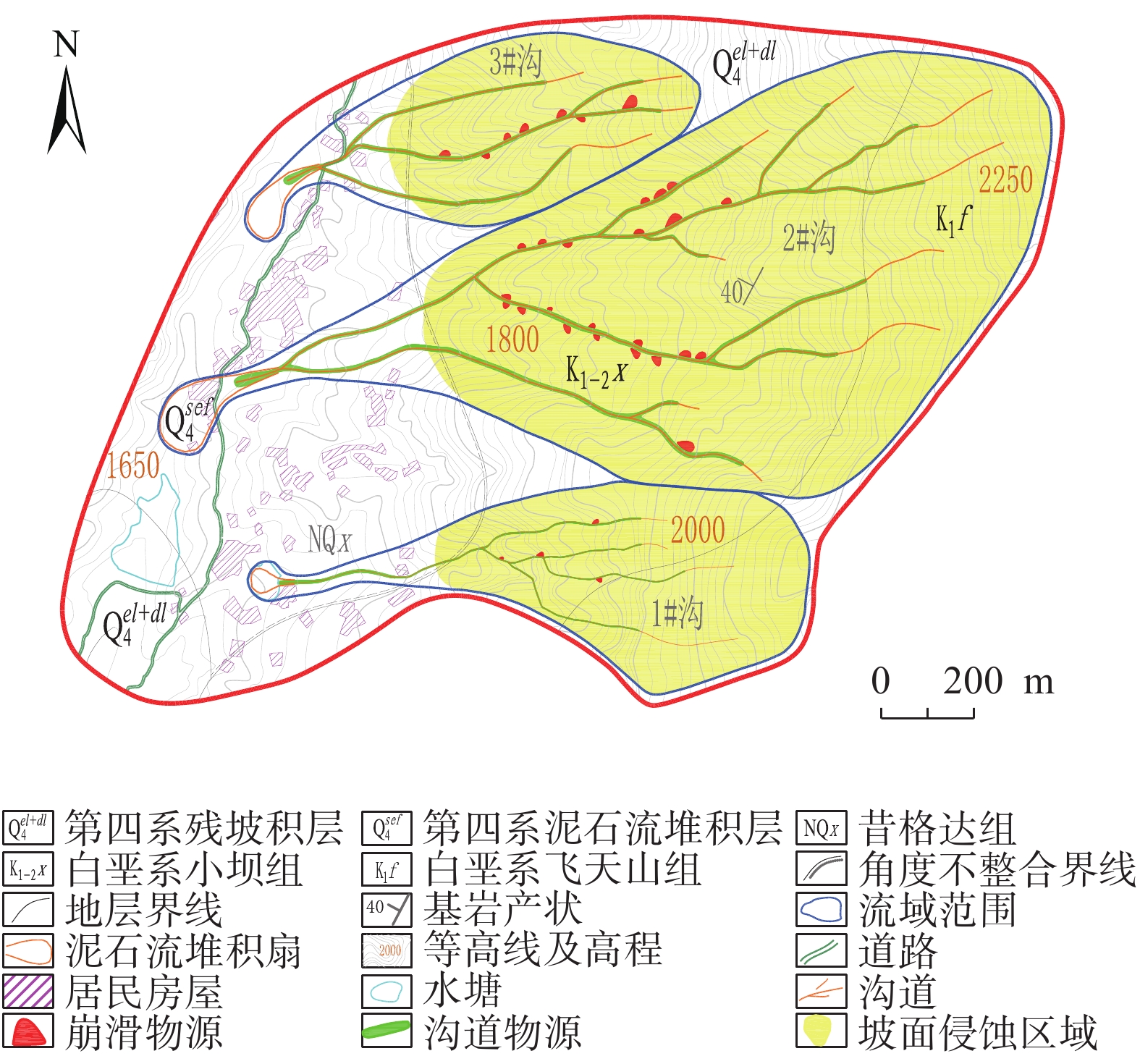
 下载:
下载:

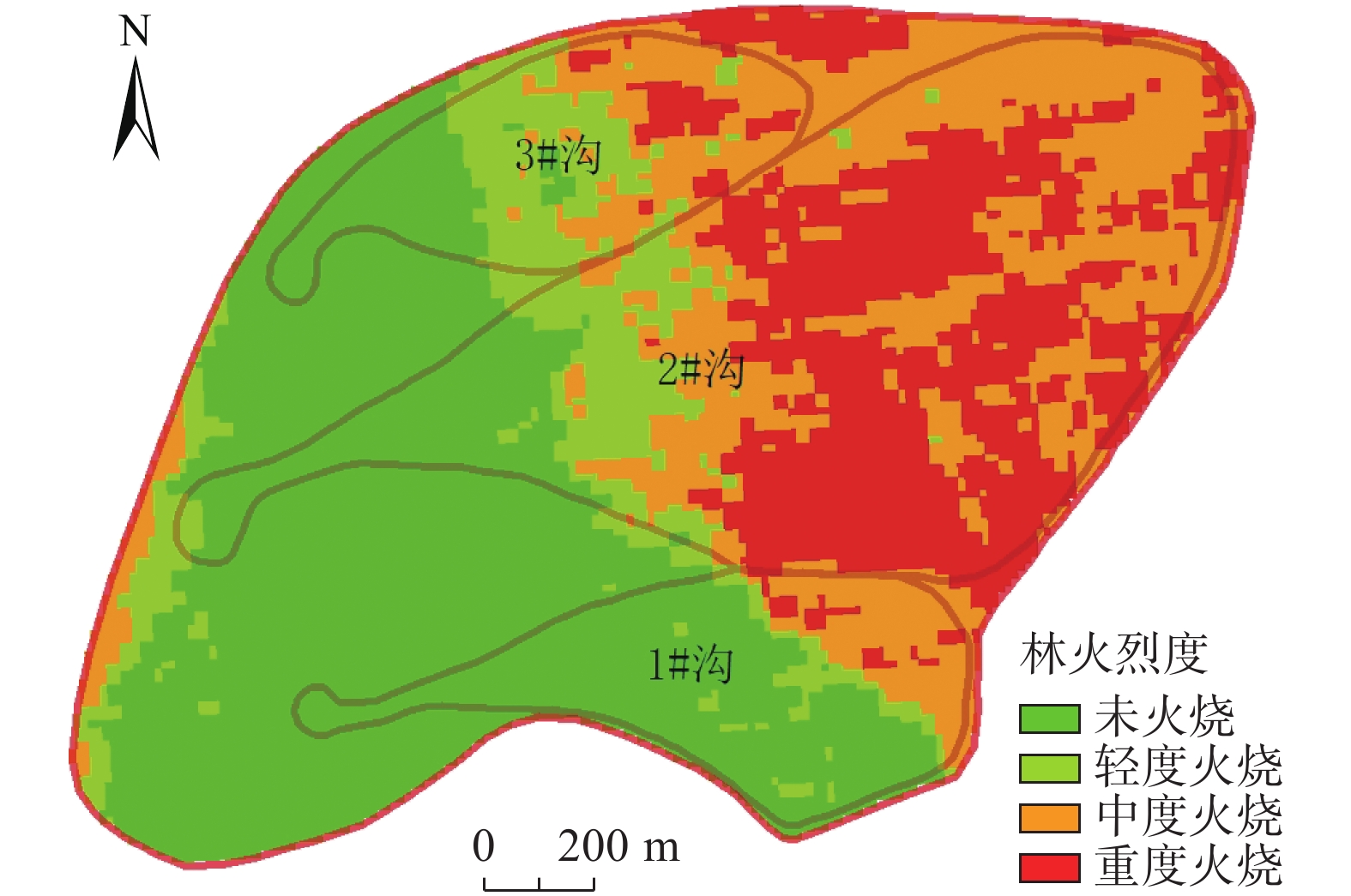



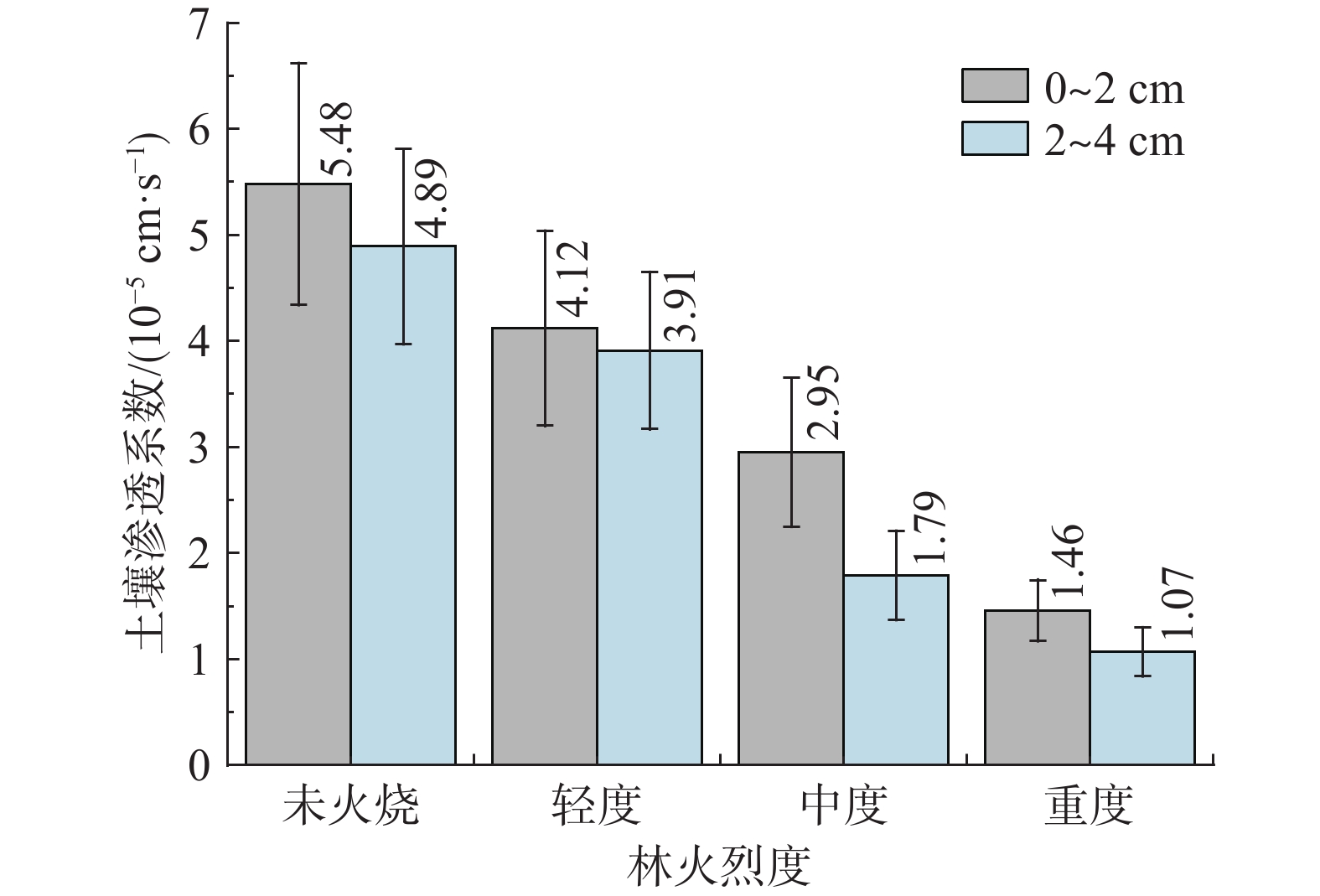
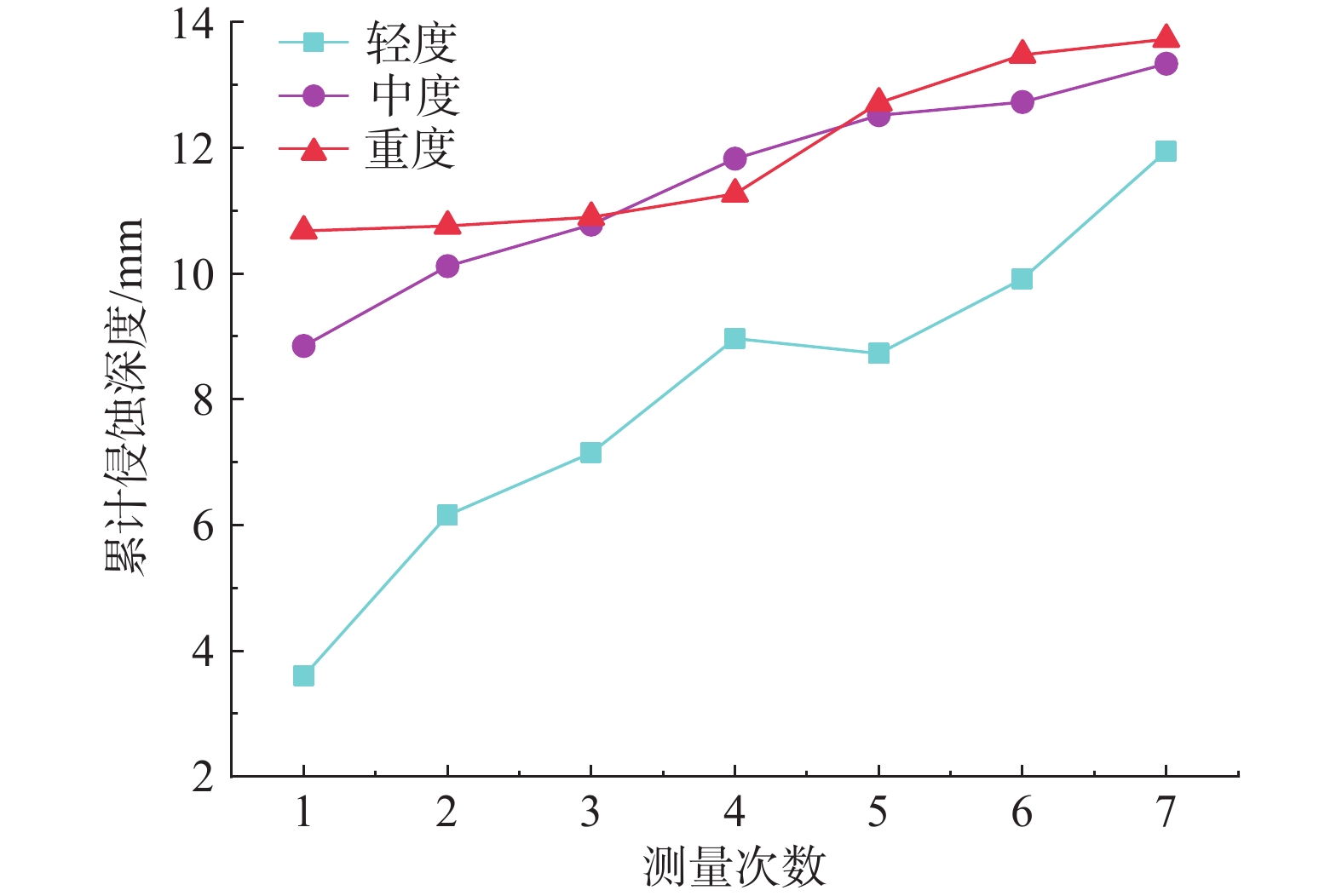

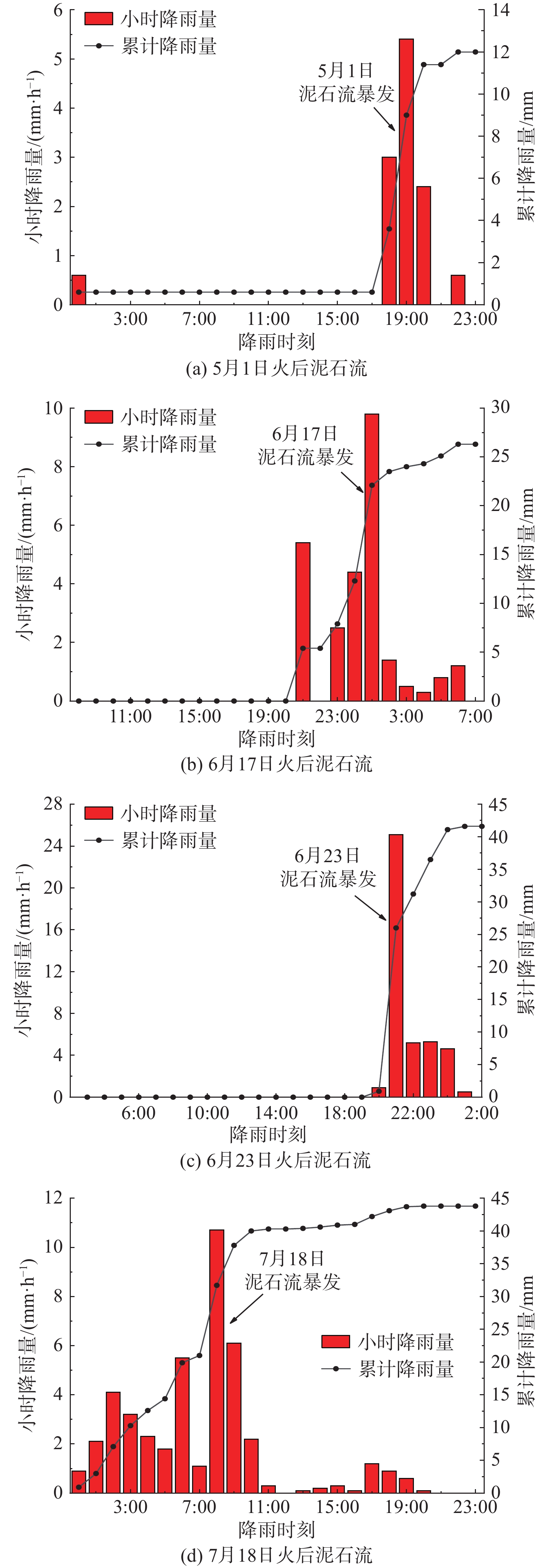
 邮件订阅
邮件订阅 RSS
RSS